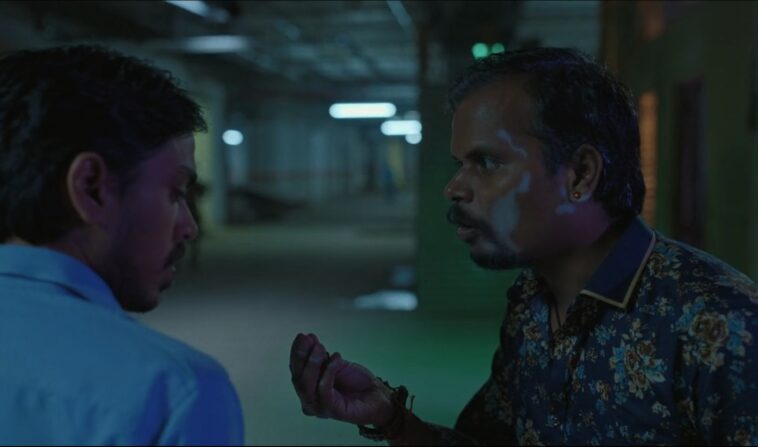Priyanka Chopra starrer crime drama, The White Tiger, started streaming on Netflix recently. Interestingly enough, the film featured a character with vitiligo. At first, I was happy to see myself represented in a mainstream Hindi movie like The White Tiger. It’s not that vitiligo hasn’t been represented in Indian motion pictures before. But, Indian films like Nital, Kuchh Bheege Alfaaz, and Imago that featured protagonists with vitiligo had always been limited in their scale and reach.
So, the moment, I saw a character with vitiligo in this film, I felt grateful for being acknowledged; it felt good to know that people who look like me can also be found in popular culture. On top of it was the fact that the film was based on the famous novel by Aravind Adiga that brought him a Man Booker Prize in 2008. Soon, my joy died down with one single dialogue with reference to the character with vitiligo – “This driver had a skin disease called vitiligo that made him look like a clown. It made my stomach churn.” And just like that, The White Tiger deepened the stigma I have been living with for a while now. I let it go, but just after 2-3 dialogues, here was another narrational bit by the film’s leading charter Balram Halwai – “I tilted my body as far as I could from his face.”
I watched the rest of the film with a heavy heart. It felt as if the film’s creative team had let me down. But, within a few hours of finishing the film, I got over it and probably thought that I was the only one offended by it. The next day, a Facebook post by a fellow vitiligan in one online support group made me feel that I wasn’t the only one who had valid questions regarding vitiligo’s representation in The White Tiger.
The film also evoked some strong emotions from members of the British-Indian community with vitiligo. Joti Gara-Aura who’s been involved in raising awareness around vitiligo in the UK shared a 16-second clip from the film on her Instagram, asking the community’s feedback on the choice of words used in there. Kirps Bhogal, a 36-year-old Content Protection Analyst and occasional model from London had some food for thought for everyone. He replied, “I watched this and for a second I was so happy to see a character with vitiligo in mainstream Bollywood. That opinion changed very quickly when reading and hearing the dialogue… made me feel sick and didn’t watch the rest of the movie. There was no need for the clown comment. Saying he had vitiligo would have been fine. I really hope this can reach the filmmakers and they educate themselves and think before doing this in the future.”
This particular and many more comments that criticized filmmakers’ choice of words made me quickly pull out the novel the film is based on. I read The White Tiger in 2008. Till that year, I was not diagnosed with vitiligo and remotely knew anyone who had it. By this time, I did not even hear the word vitiligo; so, it was very easy for me to forget what this character was all about. But when I re-read the book last evening as a vitiligan, I was surprised how ignorant and hateful Aravind Adiga’s novel had been toward those living with any visual difference. After re-reading the novel, I couldn’t help but had many questions floating my mind.
Is someone’s identity reduced to their vitiligo?
Interestingly, the film doesn’t name the character with vitiligo featured in the film, played by Nalneesh Neel. But, if you read the novel, you will notice that the physical appearance of the character dictated his entire identity throughout the pages. Book’s protagonist Balram Halwai calls him “Vitiligo-Lips.”
Vitiligo-Lips serves as a guide to Balram in Delhi, introducing him to city life, answering his many questions. Since most of the other chauffeurs and servants mercilessly tease Balram and make him an outcast, Vitiligo-Lips becomes crucial to Balram’s survival. In the book, Balram still refers to this important character as Vitiligo-Lips simply because the pigment of the man’s lips is affected by vitiligo. Doesn’t this enforce the stereotype the vitiligo community has been fighting for – “we are not our skin condition”?
Is any amount of awareness enough to educate people about vitiligo?
As per the book’s description of the character, “Vitiligo-Lips’ lips are marked by vitiligo, a skin disease that affects many poor people in India.” The description of the skin condition in the novel and the fact that Balram does not want to be associated with the vitiligo affected driver in the movie only reflects how much more awareness is needed to establish the fact that vitiligo is a skin condition that doesn’t discriminate between different castes, creeds, races, and nationalities.
In Closing: The White Tiger’s vitiligo-phobic stance only reveals the lack of awareness that continues to instill the stigma and misinformation around a rather harmless, non-contagious skin condition. Should we hang our heads in shame? Or, should we take on the significant task of educating more and more people about vitiligo? These are a few questions that matter as much as vitiligo’s representation in popular culture.

